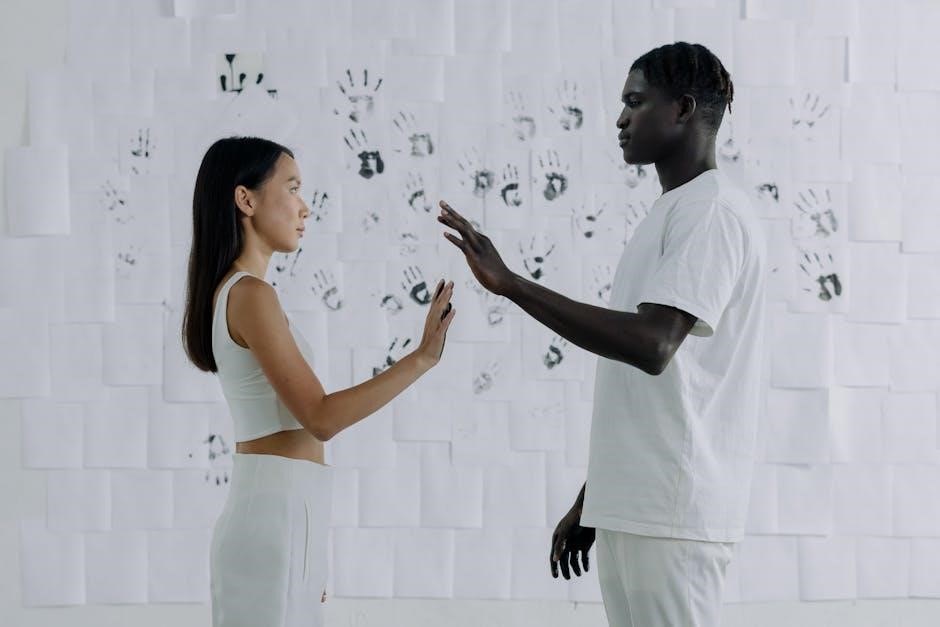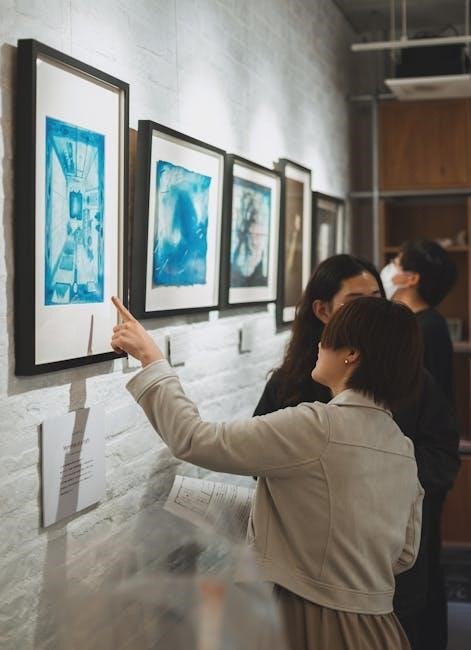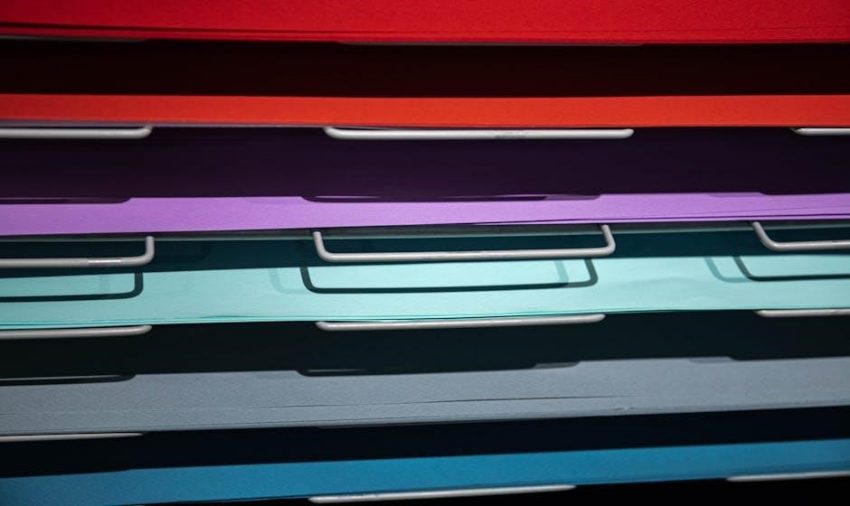Gateways to Art: Understanding the Visual Arts Fourth Edition is a comprehensive textbook designed to introduce students to the world of visual art, exploring its subjective nature and creative processes․ Authored by Debra J․ DeWitte, Ralph M․ Larmann, and Kathryn Shields, this updated edition offers enhanced content and digital accessibility, making it an essential resource for art education and AP courses; Available in PDF and other formats, it continues to inspire learners with its engaging approach to understanding art’s diverse forms and cultural significance․
Purpose and Scope of the Textbook
The primary purpose of Gateways to Art: Understanding the Visual Arts Fourth Edition is to provide students with a foundational understanding of visual arts, fostering critical thinking and appreciation․ Its scope encompasses a broad range of artistic movements, mediums, and cultural contexts, making it suitable for both introductory and advanced learners․ Designed to align with art education curricula, the textbook supports AP courses and includes global perspectives, encouraging students to explore art’s relevance in their lives and the world around them․ Its comprehensive approach ensures a well-rounded education in visual arts․
Overview of Key Features in the Fourth Edition
The fourth edition of Gateways to Art: Understanding the Visual Arts features enhanced digital integration, offering PDF, ePub, and MOBI formats for seamless accessibility across devices․ It includes updated content, expanded global perspectives, and revised images to reflect contemporary art trends․ New interactive elements, such as online resources and multimedia links, enrich the learning experience․ Additionally, the edition emphasizes critical thinking exercises and real-world applications, ensuring students gain a deeper understanding of artistic concepts and their cultural significance in today’s dynamic art world․

Structure and Organization of the Textbook
The textbook is structured into thematic chapters, covering art history and concepts, supported by visual elements and digital resources for enhanced learning and accessibility․
Chapter Breakdown and Content Coverage
The fourth edition is organized into thematic chapters, guiding students through the fundamentals of visual arts, historical periods, and diverse artistic practices․ Each chapter includes in-depth analyses of artworks, cultural contexts, and theoretical frameworks, supported by visual elements and supplementary materials․ The structure ensures a logical progression from foundational concepts to complex ideas, making it accessible for learners at all levels․ The textbook also integrates digital resources, offering interactive tools and further readings to enrich the learning experience․
Visual Elements and Supplementary Materials
The fourth edition incorporates high-quality images and interactive digital tools to enhance visual learning․ Supplementary materials include videos, downloadable resources, and online exercises, providing practical examples and exercises․ These elements ensure a dynamic and engaging experience, helping students analyze and interpret artworks effectively․ The textbook also offers accessible formats, such as PDF, ensuring compatibility with various devices and learning styles․ These features collectively enrich the educational experience, making complex concepts accessible and fostering a deeper understanding of visual arts․

Key Themes and Concepts Explored
Gateways to Art explores the subjective nature of art, emphasizing its cultural, historical, and personal interpretations․ It delves into the artist’s role and creative processes, fostering critical thinking․
The Nature of Art and Its Subjectivity

Art’s essence lies in its subjectivity, as its meaning and quality vary across individuals and cultures․ Perception is deeply personal, shaped by experiences, beliefs, and contexts․ Unlike objective measures, art’s value emerges from interpretation, making it dynamic and multifaceted․ Its evolution over time reveals changing perspectives, emphasizing its adaptive nature․ This subjectivity fosters diverse interpretations, allowing art to resonate uniquely with each viewer, highlighting the personal and cultural connection we have with creative works․
The Role of the Artist and Their Creative Process
Artists are visionaries who translate ideas and emotions into tangible forms, reflecting personal experiences and cultural contexts․ Their creative process, often intuitive or structured, involves exploration, experimentation, and refinement․ This journey transforms concepts into meaningful works, engaging viewers in interpretive dialogue․ The artist’s role is to communicate through their medium, inviting individual responses and fostering connections between creator and audience․
The Fourth Edition’s Unique Contributions

The fourth edition offers comprehensive updates, enhanced content, and digital accessibility, providing students with a richer understanding of visual arts while supporting AP course requirements effectively․
Updates and Enhancements from Previous Editions
The fourth edition of Gateways to Art: Understanding the Visual Arts introduces significant updates, including expanded coverage of contemporary art, enhanced digital integration, and improved accessibility features․ New visual elements and supplementary materials, such as interactive diagrams and multimedia resources, enrich the learning experience․ The textbook also incorporates feedback from educators and students, ensuring content is more engaging and relevant․ These enhancements aim to deepen students’ understanding of art’s cultural and historical contexts while supporting AP course requirements more effectively․
Integration of Digital Formats and Accessibility
The fourth edition of Gateways to Art: Understanding the Visual Arts is available in multiple digital formats, including PDF, ePub, and MOBI, ensuring compatibility with various devices․ Enhanced digital features, such as interactive diagrams and multimedia resources, provide a richer learning experience․ The textbook is optimized for mobile access, making it easier for students to study on the go․ Additionally, improved accessibility features, including compatibility with assistive technologies, ensure inclusivity for all learners, making the content more reachable and user-friendly than ever before․

Authors and Their Expertise
Debra J․ DeWitte, Ralph M․ Larmann, and Kathryn Shields bring extensive expertise in art history and education, offering insightful perspectives that enrich the study of visual arts․
Background and Contributions of Debra J․ DeWitte, Ralph M․ Larmann, and Kathryn Shields
Debra J․ DeWitte, Ralph M․ Larmann, and Kathryn Shields are renowned experts in art history and education, each bringing unique perspectives to the Gateways to Art series․ DeWitte specializes in modern and contemporary art, while Larmann focuses on Renaissance and Baroque periods․ Shields contributes expertise in 19th- and 20th-century art․ Their collaborative approach ensures a balanced and comprehensive exploration of visual arts, making the textbook a trusted resource for students and educators worldwide․ Their contributions have significantly enhanced the fourth edition’s depth and accessibility․

Availability and Access to the Fourth Edition
The fourth edition is accessible in PDF, ePub, and MOBI formats, ensuring compatibility with various devices․ It can be downloaded from official digital platforms and educational resources websites․
PDF and Other Digital Formats
The fourth edition of Gateways to Art: Understanding the Visual Arts is widely available in PDF, ePub, and MOBI formats, catering to diverse reading preferences and device compatibility․ The PDF version is particularly popular for its ability to preserve the book’s layout and high-quality visuals, making it ideal for art students who need to study images in detail․ Additionally, the digital formats can be accessed on various platforms, including e-readers, tablets, and smartphones, ensuring flexibility for learners․ The textbook is also available for download from multiple online sources, including academic platforms and ebookstores, making it easily accessible to a global audience․
Where to Find and Download the Textbook
The fourth edition of Gateways to Art: Understanding the Visual Arts can be easily found and downloaded from various online platforms․ Popular sources include Google Play Books, Amazon, and Thames & Hudson’s official website․ Additionally, the PDF version is available through direct download links on academic forums and educational websites․ To ensure authenticity, it’s recommended to purchase or download from reputable sources․ The textbook is also accessible via ebookstores like Barnes & Noble and Apple Books, offering compatibility with multiple devices for convenient access․

Educational Value and Impact
Gateways to Art: Understanding the Visual Arts Fourth Edition is a leading resource for art education, offering comprehensive insights and supporting AP courses with its detailed content and visual tools․ Designed by experts like Debra J․ DeWitte, Ralph M․ Larmann, and Kathryn Shields, it provides students and educators with a foundational understanding of art’s cultural and historical significance, fostering critical thinking and creativity․
Relevance to Art Education and AP Courses

Gateways to Art: Understanding the Visual Arts Fourth Edition is specifically designed to align with AP Art History and Studio Art courses, providing students with a robust foundation for analyzing and interpreting art․ Its comprehensive coverage of art from diverse periods and cultures prepares learners for the rigors of AP exams and fosters critical thinking․ The textbook’s structured approach and visual tools make it an invaluable resource for both students and educators seeking to deepen their understanding of the visual arts․
Student and Instructor Resources
The fourth edition offers extensive resources to support both students and instructors․ A companion website provides interactive activities, image flashcards, and quizzes to enhance learning․ Instructors benefit from lecture slides, assessment tools, and a comprehensive instructor’s manual․ Additionally, the Gateways to Art Journal for Museum and Gallery Applications supplements the textbook with practical exercises․ Digital formats, including PDF, ensure easy access to materials, while online platforms offer additional multimedia content to enrich the educational experience for all users․

